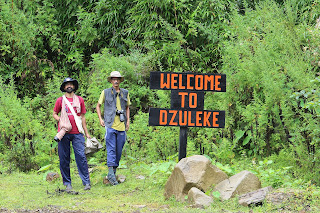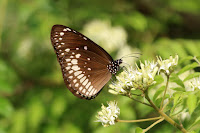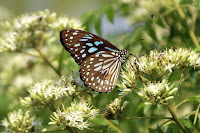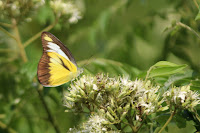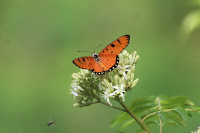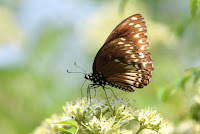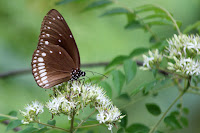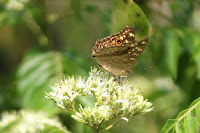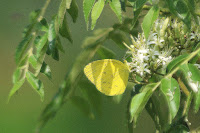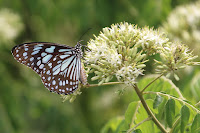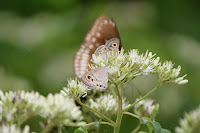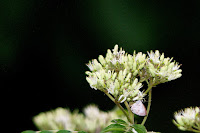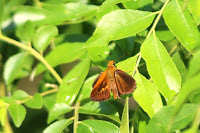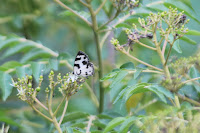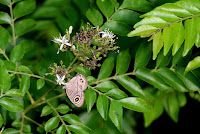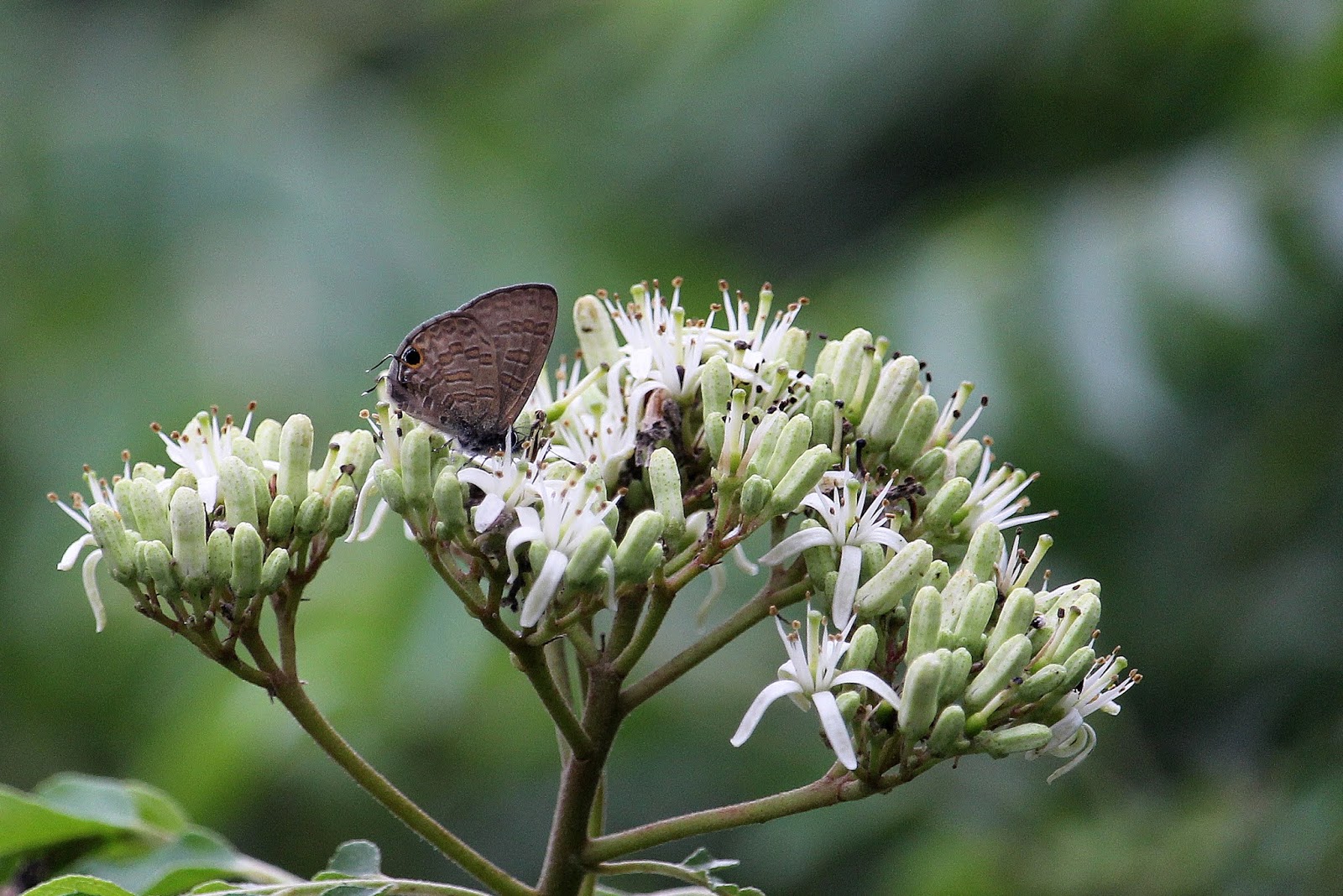വിവരവിനിമയ സാങ്കേതികവിദ്യയുടെ രംഗത്തുണ്ടായ കുതിച്ചുചാട്ടത്തോടുകൂടി ലോകം കൂടുതൽ ചെറുതായി കൊണ്ടിരിക്കുകയാണ്. പ്രദേശങ്ങൾ തമ്മിലുള്ള ദൂരവും സമയവും കുറയുന്നതോടൊപ്പം വ്യക്തികളും സമൂഹങ്ങളും തമ്മിലുള്ള അകലവും ഒരുപാട് കുറക്കുന്നതിന് സമൂഹമാധ്യമങ്ങള് സഹായകമായിട്ടുണ്ട്.
ഇൻറർനെറ്റിന്റെയും അനുബന്ധ സേവനങ്ങളുടെയും വ്യാപനം ലോകത്തെ ഒരു ചെറിയ ഏകകമായി മാറ്റാൻ മാത്രം പര്യാപ്തമാണ്. വിദൂര കോണുകളിൽ നിന്നുമുള്ള അറിയിപ്പുകളും ദൃശ്യ-ശ്രാവ്യ സന്ദേശങ്ങളും തൽസമയം അല്ലെങ്കില് തൊട്ടടുത്ത നിമിഷം സ്വീകരിക്കാവുന്ന രീതിയിൽ സാങ്കേതികവിദ്യ പുരോഗതി പ്രാപിച്ചിട്ടുണ്ട്.ഇമെയിൽ വഴിയുള്ള സന്ദേശങ്ങളും വിനിമയങ്ങളും സാമൂഹിക മാധ്യമങ്ങൾ വഴിയുള്ള പരസ്പരഇടപെടലുകളും നഗരഗ്രാമ വ്യത്യാസമില്ലാതെ ഇന്ന് സാധാരണക്കാർ വരെ ഉപയോഗിക്കുന്നു. ഈ നവമാധ്യമങ്ങള് നല്കുന്ന എണ്ണിയാല് തീരാത്ത സേവനങ്ങളോടൊപ്പം ഒട്ടനവധി പ്രശ്നങ്ങൾക്കും കാരണമാകുന്നുണ്ട്. ഇത്തരം കാര്യങ്ങളെക്കുറിച്ചുള്ള ചില ആലോചനകളാണ് ഇവിടെ പങ്കുവയ്ക്കുന്നത്.
കമ്പ്യൂട്ടറുകള് വഴിയുള്ള വിവരങ്ങളുടെയും ആശയങ്ങളുടെയും കൈമാറ്റത്തിന് യോജിച്ച സാങ്കേതിക സംവിധാനങ്ങളാണ് സമൂഹമാധ്യമങ്ങൾ പൊതുവേ ഉപയോഗിക്കുന്നത് .സാധാരണ ഒരു ഉപഭോക്താവിന് ചിത്രങ്ങളും ചലച്ചിത്രങ്ങളും വിവരങ്ങളും പങ്കുവെക്കാനും മറ്റുള്ളവർ പങ്കുവെച്ച ഇത്തരം കാര്യങ്ങളില് സ്വന്തം അഭിപ്രായങ്ങൾ രേഖപ്പെടുത്താനും അവസരം നൽകുന്നു. ഒരുകൂട്ടം ആളുകൾക്ക് ഒന്നിച്ചു സംവദിക്കാനുള്ള വേദി ഒരുക്കുകയാണ് മിക്ക സാമൂഹിക മാധ്യമങ്ങളും ചെയ്യുന്നത്. ഇൻറർനെറ്റിലെ ഏറ്റവും വലിയ സോഷ്യൽ മീഡിയ വെബ്സൈറ്റായ ഫെയ്സ്ബുക്ക് തുടങ്ങി ട്വിറ്റർ, ലിങ്ക്ഡ്-ഇന്, ഏറ്റവും വലിയ വീഡിയോ ഷെയറിംഗ് വെബ്സൈറ്റായ യൂട്യൂബ്, ഫോട്ടോകൾ പങ്കുവയ്ക്കാനുള്ള ഇൻസ്റ്റാഗ്രാം, തൽസമയ ആശയവിനിമയം സാധ്യമാക്കുന്ന വാട്സ് ആപ്പ് തുടങ്ങി ചെറുതും വലുതുമായ ഒട്ടനവധി സാമൂഹിക മാധ്യമങ്ങൾ ഇന്ന് അരങ്ങുവാഴുന്നു.
2018ലെ ഗ്ലോബൽ ഡിജിറ്റൽ റിപ്പോർട്ടനുസരിച്ച് ലോകത്ത് 400 കോടി ജനങ്ങളാണ് ഇന്റര്നെറ്റ് ഉപയോഗിക്കുന്നത്. സമൂഹമാധ്യമങ്ങളിൽ സജീവമായവരുടെ എണ്ണം 300 കോടി അത്രെ. അവരിൽ പത്തിൽ 9 പേരും സ്മാർട്ട് ഫോണുകൾ വഴിയാണ് നവമാധ്യമങ്ങളിൽ തങ്ങളുടെ സാന്നിധ്യം ഉറപ്പിക്കുന്നത്. ഏറ്റവും ഒടുവില് വന്ന ഒരു പഠനം പറയുന്നത് 2019 ല് ഇന്ത്യയില് സമൂഹമാധ്യമങ്ങള് ഉപയോഗിക്കുന്നവരുടെ എണ്ണം 29 കോടി ആയിത്തീരും എന്നാണ്. നമ്മുടെ രാജ്യത്ത് ഏറ്റവും കൂടുതല് ആളുകള് ഇപയോഗിക്കുന്ന സമൂഹമാധ്യമങ്ങള് യൂട്യബും ഫോസ്ബുക്കും തൊട്ടു പിന്നാലെ വാട്സപ്പും ആണ്. ഉറങ്ങി എഴുന്നേൽക്കുമ്പോൾ തൊട്ട് കിടന്നുറങ്ങുന്നത് വരെ സ്വന്തം ശരീരത്തിന്റെ അവിഭാജ്യഘടകമായി എല്ലാ സൗകര്യങ്ങളോടും കൂടിയ സ്മാർട്ട്ഫോണുകൾ കൊണ്ടുനടക്കുന്ന സ്വഭാവം വളരെ വേഗം വ്യാപിക്കുകയാണ്.
പത്രങ്ങളില് നിന്നും മറ്റ് ആനുകാലികങ്ങളിൽ നിന്നും വ്യത്യസ്തമായി ഇൻറർനെറ്റ് അധിഷ്ഠിതമായ ഇത്തരം നവമാധ്യമങ്ങൾക്ക് കാതലായ പല വ്യത്യാസങ്ങളുമുണ്ട്. ഒരു വ്യക്തിയും സമൂഹവും തമ്മിലുള്ള ആശയവിനിമയത്തിന്റെ വേഗത, എത്തിച്ചേരുന്ന ആളുകളുടെ എണ്ണത്തിലുള്ള വ്യത്യാസം ,ഏറ്റവും പുതിയ വിവരങ്ങൾ അതത് സമയം ചേർക്കാനുള്ള സൗകര്യം, ഓരോരുത്തർക്കും തൽസമയം പ്രതികരണങ്ങൾക്കുള്ള അവസരം, എന്നിവയൊക്കെ എടുത്തുപറയത്തക്ക സവിശേഷതകളാണ്. എല്ലാ പത്ര മാധ്യമങ്ങള്ക്കും ടെലിവിഷന് ചാനലുകള്ക്കും ഇത്തരം സമൂഹമാധ്യമങ്ങളില് സജീവ സാന്നിദ്ധ്യമുണ്ട് എന്നതും രസകരമായ വസ്തുതയാണ്. അവിടെ റിപ്പോര്ട്ട് ചെയ്യുന്ന വാര്ത്തകളെക്കുറിച്ചുള്ള വായനക്കാരുടെ സജീവമായചര്ച്ചകളും സംവാദങ്ങളും നടക്കുന്നത് ആരോഗ്യകരമായ ഒരു സംസ്ക്കാരമാണെന്നു വിലയിരുത്തപ്പെട്ടിട്ടുണ്ട്. ഒരു സ്രോതസ്സിൽ നിന്നും പലരിലേക്കും എന്ന പത്രങ്ങളുടെയും ചാനലുകളുടെയും പരമ്പരാഗത രീതികളിൽനിന്നും വ്യത്യസ്തമായി പല സ്രോതസ്സുകളിൽ നിന്നും പലരിലേക്കും പലവഴിയിൽ എന്നതത്രേ സമൂഹമാധ്യമങ്ങളുടെ രീതി . എല്ലാവിധ സൗകര്യങ്ങളുമുള്ള സ്മാർട്ട്ഫോണുകളുടെ വ്യാപനത്തോടെ ഇവയുടെ പ്രഭാവത്തിൽ നിന്നും നിന്നും ആർക്കും മാറിനിൽക്കാനാവില്ല എന്നായി അവസ്ഥ.
പരസ്പര ഇടപെടലുകൾ സാധ്യമായ ഏറ്റവും ശക്തമായ സമൂഹമാധ്യമങ്ങൾ സമൂഹ ജീവിതത്തെ സ്വാധീനിക്കുന്നത് വ്യത്യസ്ത രീതികളിലാണ് . വ്യക്തികൾ തമ്മിൽ അടിയുറച്ച ബന്ധങ്ങൾ സൃഷ്ടിക്കാനും ആശയവിനിമയം സാധ്യമാക്കാനും ഇവ സഹായിക്കുന്നു .അമേരിക്കയിലും യൂറോപ്യൻ രാജ്യങ്ങളിലും എന്നതുപോലെ ഇന്ത്യയിലും സാമൂഹിക അഭിപ്രായം സ്വരൂപിക്കുന്നതിലും അത് പ്രചരിപ്പിക്കുന്നതിലും ഇന്ന് സമൂഹമാധ്യമങ്ങൾ നല്ല പങ്കുവഹിക്കുന്നുണ്ട്. സംഘടനകളും രാഷ്ട്രീയപാർട്ടികളും തങ്ങളുടെ ആശയപ്രചാരണത്തിനും ജനാഭിപ്രായം തങ്ങള്ക്ക് അനുകൂലമാക്കിുന്നതിന്നും ഇന്ന് ഈ മാധ്യമങ്ങളെ കാര്യമായിത്തന്നെ ആശ്രയിക്കുന്നുണ്ട്. നമ്മുടെ രാഷ്ട്രീയ നേതാക്കന്മാർ എല്ലാംതന്നെ വേണ്ടവിധത്തിൽ ഇവയെ ഉപയോഗിക്കാൻ ശ്രദ്ധിക്കുന്നവരാണ്. പ്രകൃതിദുരന്തങ്ങളിലും ആപൽഘട്ടങ്ങളിലും സമൂഹമാധ്യമങ്ങൾ നിർവഹിക്കുന്ന പങ്ക് വളരെ പ്രധാനപ്പെട്ടതാണ്. ഈ അടുത്തകാലത്ത് കേരളം കടന്നുപോയ മഹാ പ്രളയ ദിനങ്ങളിൽ ഇന്ത്യക്കകത്തും പുറത്തുമുള്ള സന്നദ്ധസേവകര് വിവരങ്ങൾ അറിയിക്കാനും കുടുങ്ങിക്കിടന്ന വരെ രക്ഷിക്കാനും മുന്നറിയിപ്പുകൾ നൽകാനും വിഭവങ്ങൾ ശേഖരിക്കാനും നവമാധ്യമങ്ങളെ ഉപയോഗിച്ചത് ശ്രദ്ധേയമായിരുന്നു. വിവിധ കേന്ദ്ര-സംസ്ഥാന സർക്കാർ വകുപ്പുകൾ പൊതുജനങ്ങളുമായി സംവദിക്കാൻ ഇത്തരം മാധ്യമങ്ങൾ പ്രയോജനപ്പെടുത്തുന്നു. ഇന്ത്യൻ റെയിൽവേയുടെ ട്വിറ്റർ അക്കൗണ്ട്, കേരള പോലീസിന്റെ ഫേസ്ബുക്ക് പേജ് എന്നിവ എടുത്തുപറയേണ്ടവയാണ്. പത്ത് ലക്ഷം ലൈക്കുകളുമായി കേരള പോലീസിന്റെ ഫേസ്ബുക്ക് പേജ് ന്യൂയോര്ക്ക് പോലീസിനെയും മറികടന്നത് ഇക്കഴിഞ്ഞ ദീവസം വാര്ത്തയായിരുന്നു. ചെറുതും വലുതുമായ വ്യാപാര വാണിജ്യ സ്ഥാപനങ്ങൾ അവരുടെ ഉത്പന്നങ്ങളുടെ പ്രചരണത്തിനും വിപണനത്തിനും നവമാധ്യമങ്ങളെ മികച്ച രീതിയിൽ ഉപയോഗിക്കുന്നു. വികസിതരാജ്യങ്ങളിൽ വിദ്യാഭ്യാസ മേഖലയിലും ഈ മാധ്യമങ്ങൾ ഗുണപരമായി പങ്ക് വഹിക്കുന്നു. പാഠവിനിമയത്തിലും സംശയനിവാരണത്തിനും വിവരശേഖരണത്തിനും മൂല്യനിർണയ പ്രവർത്തനങ്ങൾക്ക് പോലും നവമാധ്യമങ്ങൾ ഉപയോഗിക്കപ്പെടുന്നു.
സമൂഹ മാധ്യമങ്ങൾ സമൂഹത്തിൽ ആഴ്ന്നിറങ്ങി പടർന്നു കിടക്കുകയാണ് എന്ന് നാം കണ്ടു. എന്നാൽ വിവേചനമില്ലാത്ത ഇവയുടെ ഉപയോഗം സമൂഹത്തിൽ സൃഷ്ടിക്കുന്ന പ്രശ്നങ്ങളും ധാരാളമാണ്. 2018 ല് ഫേസ്ബുക്കുമായി ബന്ധപ്പെട്ട അമേരിക്കയിൽ നടന്ന കേംബ്രിഡ്ജ് അനലിറ്റിക്ക വിവാദം ഏറെ ചർച്ച ചെയ്യപ്പെട്ട ഒന്നാണ്. പൊതുജനാഭിപ്രായത്തെ സമൂഹ മാധ്യമങ്ങൾ ഉപയോഗിച്ച് തങ്ങളുടേതായ രീതിയിൽ മാറ്റിമറിക്കാം എന്ന് അത് കാണിച്ചു കൊടുത്തു. ജനാധിപത്യ രാജ്യങ്ങളിലെ തിരഞ്ഞെടുപ്പുകളെ പോലും ഇതു വഴി വ്യാപകമായി സ്വാധീനിക്കാൻ കഴിയുന്നു. ചില സന്ദര്ഭങ്ങളിലെങ്കിലും തെറ്റായ വാർത്തകൾ പ്രചരിപ്പിച്ചു ജനവികാരങ്ങളെ ഊതിവീർപ്പിച്ച് കാട്ടുതീപോലെ പടർത്തി സമാധാനത്തിനും സഹവർത്തിത്വത്തിനും ഭീഷണിയാവാൻ ഇവയ്ക്ക് കഴിഞ്ഞിട്ടുണ്ട്. തെറ്റായവാര്ത്തകള് അതിവേഗം പ്രചരിപ്പിച്ച് ആള്ക്കൂട്ട കൊലപാതകങ്ങള് പോലുള്ള ഭീതിദമായ കുറ്റകൃത്യങ്ങളില് രാസത്വരകമായി പ്രവര്ത്തിച്ചത് ഇത്തരം മാധ്യമങ്ങള് ആയിരുന്നു. വാട്സ്ആപ്പ് പോലുള്ള മാധ്യമങ്ങളോട് ഉത്തരവാദിത്വത്തോടെയുള്ള വിവര വിനിമയം സാധ്യമാക്കാൻ നിരവധി ഘടനാപരമായ മാറ്റങ്ങൾവരുത്താന് സർക്കാർ ആവശ്യപ്പെടുകയുണ്ടായി.
വ്യക്തികളുടെ സ്വകാര്യതയുമായി ബന്ധപ്പെട്ട് നിരവധി ചോദ്യങ്ങള് സമൂഹമാധ്യമങ്ങള് ഉയര്ത്തുന്നുണ്ട്. 2000-ത്തിലെ ഇന്ർഫർമേഷൻ ടെക്നോളജി നിയമത്തിലെ 66 ഇ വകുപ്പനുസരിച്ച് ഒരാളുടെ സമ്മതമില്ലാതെ അയാളുടെ സ്വകാര്യ ചിത്രമെടുക്കുകയോ കൈമാറുകയോ പ്രസിദ്ധീകരിക്കുകയോ ചെയ്യുന്നത് കുറ്റകരമാണ്. ഈ നിയമം പലരും അറിഞ്ഞും അറിയാതെയും ലംഘിക്കുന്നുണ്ട്. ഇതേ നിയമത്തിലെ 66 എ വകുപ്പ് പ്രകാരം നിന്ദ്യമായ സന്ദേശം അയക്കുന്നതും മറ്റുള്ളവർക്ക് ഈർഷ്യയോ ബുദ്ധിമുട്ടോ അപകടമോ തടസ്സമോ ഉപദ്രവമോ ശത്രുതയോ ഉളവാക്കുന്ന കാര്യങ്ങൾ അയക്കുന്നതും പ്രചരിപ്പിക്കുന്നതും ശിക്ഷാർഹമായ കുറ്റമാണ്. കലുഷിതമായ സാമൂഹ്യ അന്തരീക്ഷത്തിൽ പലപ്പോഴും ഇത്തരത്തിലുള്ള സന്ദേശങ്ങൾ രാഷ്ട്രീയ-മത-സാമുദായിക അഭിപ്രായവ്യത്യാസങ്ങളുടെ പേരിൽ നിത്യേനയെന്നോണം പ്രചരിക്കപ്പെടുന്നത് എത്രമാത്രം ദോഷകരമാണെന്നു ആലോചിക്കുക. ഫേസ്ബുക്ക് പോലെയുള്ള മാധ്യമങ്ങളിലെ പ്രൊഫൈൽ ചിത്രങ്ങളായും മറ്റും ഉൾപ്പെടുന്ന വ്യക്തിഗത ഫോട്ടോകൾ ദുരുപയോഗം ചെയ്യപ്പെടാനുള്ള സാധ്യത ഏറെയാണ്. ഇങ്ങനെ സംഘടിപ്പിക്കുന്ന ഫോട്ടോകള് സാമൂഹ്യവിരുദ്ധര് കമ്പ്യൂട്ടർ ഉപയോഗിച്ച് രൂപമാറ്റം വരുത്തി ദുരുപയോഗം ചെയ്യുന്ന ഒട്ടനവധി കേസുകൾ കേൾക്കാറുണ്ട്. ഇത്തരത്തിലുള്ള മറ്റൊരു കുറ്റകൃത്യമാണ് നവമാധ്യമങ്ങൾ വഴി നടക്കുന്ന അനധികൃതമോ നിരോധിച്ചതോ ആയ സാധനങ്ങളുടെ വിൽപനയും വിതരണവും.
അതിവേഗം വര്ത്തകള് കൈമാറ്റം ചെയ്യാനുള്ള സംവിധാനമാണ് ഇന്ന് ഇത്തരം മാധ്യമങ്ങളെങ്കിലും ഇതു വഴി കൈമാറ്റം ചെയ്യപ്പെടുന്ന വാര്ത്തകളുടെ ആധികാരികതയും വിശ്വാസ്യതയും പലപ്പോഴും ചോദ്യംചെയ്യപ്പെടാറുണ്ട്. ഐക്യരാഷ്ട്രസഭ ജനഗണമനയെ ലോകത്തിലെ ഏറ്റവും മികച്ച ദേശീയഗാനമായി തിരഞ്ഞെടുത്തുവെന്ന വാര്ത്തയും നമ്മുടെ കഞ്ഞി ലോകത്തിലെ എറ്റവും മികച്ച ഭക്ഷണത്തിനുള്ള അംഗീകാരം യുനെസ്ക്കോവില് നിന്നും നേടി എന്ന വാര്ത്തയും ഒക്കെ വളരെ വേഗത്തില് പടര്ന്നുപിടിച്ച അത്തരത്തില് പെട്ട വ്യാജവാര്ത്തകളായിരുന്നു. സ്വന്തം സ്മാര്ട്ട് ഫോണിലെ ഏതെങ്കിലും സമൂഹമാധ്യമത്തില് ഇരുതലയുള്ള പാമ്പിനെയും നാലുകാലും ചിറകുമുള്ള ഭീകരജീവിയെയും കണ്ടിട്ടില്ലാത്തവര് കുറവായിരിക്കും. ചില വ്യാപാരസ്ഥാപനങ്ങളും കമ്പനികളും ഇത്തരം മാധ്യമങ്ങളിലൂടെ നടത്തുന്ന വിപണന തന്ത്രങ്ങളിലെ തട്ടിപ്പുകള് സാധാരണക്കാര്ക്ക് തിരിച്ചറിയാന് ഏറെ പ്രയാസമാണ്. ഇത്തരം മാധ്യമങ്ങളിലൂടെ വ്യക്തികള് കാണിക്കുന്ന ഇഷ്ടാനിഷ്ടങ്ങള് സംബന്ധിച്ച വിരങ്ങള് അവരറിയാതെ തന്നെ ശേഖരിച്ച് വ്യാപാര വാണിജ്യ ആശ്യങ്ങള്ക്കു വേണ്ടി നല്കി പണം സമ്പാദിക്കുന്ന രീതിയിലുള്ള പ്രവര്ത്തനങ്ങള് തീര്ച്ചയായും തിരിച്ചറിയപ്പെടേണ്ടതുണ്ട്. വ്യജപ്രൊഫൈലുകളും മേല്വിലാസങ്ങളും വഴി പണം തട്ടിയെടുക്കുന്ന ധാരാളം തട്ടിപ്പുസംഘങ്ങളും ഇത്തരം മാധ്യമങ്ങളില് എല്ലാം സജീവമാണ് ഇന്ന്. സോഷ്യല് മീഡിയമാര്ക്കറ്റിങ് എന്ന പുതിയൊരു മേഖലതന്നെ ഇന്ന് വളര്ന്നു കഴിഞ്ഞു. ഇത്തരം വിപണന തന്ത്രങ്ങളിലേക്ക് ആകര്ഷിക്കപ്പെടുന്നവരുടെ എണ്ണം വളരം കൂടുതലാണ്. അതോടൊപ്പം അതിലൂടെ തട്ടിപ്പിനിരയാകുന്നവരുടെ എണ്ണവും.
നവമാധ്യമങ്ങള് ഉയര്ത്തുന്ന മറ്റൊരു വന് ഭീഷണിയാണ് അവയോടുള്ള പൂര്ണമായവിധേയത്വവും അടിമത്തവും. ഇന്ന് രാത്രിയെന്നോ പകലെന്നോ ഭേദമില്ലാതെ സമൂഹമാധ്യമങ്ങളില് അഭിരമിക്കുന്ന യുവത്വം സമൂഹത്തിനും കുടുംബത്തിനും വലിയ ഭീഷണിയായിത്തീര്ന്നിരിക്കുകയാണ്. മൊബൈല്ഫോണ് നഷ്ടപ്പെടുമോ എന്നും അതുവഴി സമൂഹത്തില് നിന്നും ഒറ്റപ്പെട്ടുപോകുമോ എന്നും ഉള്ള അനാവശ്യ മാനസിക ഭീതിക്ക് നോമോഫോബിയ എന്ന പേരിട്ടാണ് ഡോക്റ്റര്മാര് വിശേഷിപ്പിക്കുന്നത്. തൊട്ടടുതുത്തുള്ള സഹജീവികളെയും ചുറ്റുപാടുകളെയും തീരെ ശ്രദ്ധിക്കാതെ പ്രതീതി യാഥാര്ത്ഥ്യത്തില് (Virtual reality) മുഴുകിക്കിടക്കുന്ന ഒരു തലമുറ സ്വന്തം ആരോഗ്യത്തെയും സമൂഹആരോഗ്യത്തെയും ആണ് നശിപ്പിക്കുന്നത്.
അപാരമായസാധ്യതകളും പ്രയോജനങ്ങളും ഉള്ള സമൂഹമാധ്യമങ്ങള് എങ്ങിനെയാണ് ഒരേ സമയം ഗുണപരമായും ദോഷകരമായും പ്രവര്ത്തിക്കുന്നത് എന്നാണ് നാം ചര്ച ചെയ്തത്. ദൂഷ്യവശങ്ങള് പരമാവധി ഒഴിവാക്കി എങ്ങിനെയാണ് ഇത്തരം മാധ്യമങ്ങളുടെ ക്രിയാത്മകമായ ഉപയോഗം സാധ്യമാവുക? ഏതായാലും സമൂഹമാധ്യമങ്ങള് ഇല്ലാത്ത ഒരു ലോകം നമുക്കിനി സങ്കല്പിക്കാന് സാധ്യമല്ല തന്നെ. തികഞ്ഞ ഉത്തരവാദിത്ത ബോധത്തോടെ ആവശ്യമായ മുന്കരുതലുകള് സ്വീകരിച്ച് അവ സര്ഗാത്മകമായി ഉപയോഗിക്കുക എന്നതാണ് കരണീയം. മറ്റുള്ളവരെ തെറ്റിദ്ധരിപ്പിക്കുന്നതോ ആക്രമണത്തിനോ തെറ്റായ പ്രവര്ത്തനങ്ങള്ക്കോ പ്രേരിപ്പിക്കുന്നതോ ആയ വിവരങ്ങള് , ചിത്രങ്ങള്,ചലചിത്രങ്ങള് എന്നിവ സമൂഹമാധ്യമങ്ങളില് പോസ്റ്റ് ചെയ്യാനോ മറ്റുള്ളവരില് നിന്നും ലഭിച്ച ഇത്തരം കാര്യങ്ങള് പങ്കു വെക്കാനോ പാടില്ല. ഒരു കാര്യം പോസ്റ്റ് ചെയ്യുന്നതിനു മുന്നേ ആ കാര്യം സത്യസന്ധമാണോ, ആരെയെങ്കിലും മുറിവേല്പ്പിക്കുന്നതാണോ, നിയമവിരുദ്ധമാണോ, നിര്ബന്ധമായും പോസ്റ്റ് ചെയ്യേണ്ടതാണോ എന്നീ കാര്യങ്ങള് കൂടി പരിഗണിക്കുക. നിങ്ങളുടെ പോസ്റ്റുകള് ആ സമയം തന്നെ മറ്റുള്ള ആളുകള് വായിക്കാനും അങ്ങിനെ പ്രചരിപ്പിക്കപ്പെടാനും സാധ്യതയുണ്ട്. അതുകൊണ്ട് തന്നെ അത്തരം പോസ്ററുകളിലെ ഉള്ളടക്കം പൂര്ണമായും ശരിയാണെന്ന് ഉറപ്പിച്ചതിന്നു ശേഷം മാത്രം പങ്കുവെക്കുകയാവും അഭികാമ്യം. ഇങ്ങിനെ ചെയ്തില്ലെങ്കില് നിങ്ങളും ഇത്തരം വ്യാജസന്ദേശങ്ങള് പ്രചരിപ്പിക്കാന് കൂട്ടു നില്ക്കുകയാണെന്ന് ഓര്ക്കുക. വിരങ്ങളുടെയും ചിത്രങ്ങളുടെയും ആധികാരികത ഉറപ്പിക്കാന് ഇന്റര്നെറ്റില്ത്തന്നെ ധാരാളം വഴികളുണ്ടെന്ന കാര്യം മനസ്സിലാക്കുക. വാര്ത്തകളുടെയും വിവരങ്ങളുടെയും സ്രോതസ്സുകള് കണ്ടെത്താന് ശ്രമിച്ച് അവയുടെ ആധികാരികത ഉറപ്പിക്കാനാവും. വ്യക്തിപരമായതും സ്വകാര്യമായതും ആയ വിവരങ്ങള് ഒരിക്കലും പൊതുവായി പങ്കുവെക്കാതിരിക്കുക. ഫേസ്ബുക്ക് ഉള്പ്പടെയുള്ള മാധ്യമങ്ങളില് നിങ്ങള് നല്കുന്ന മൊബൈല് ഫോണ്നമ്പര് നിങ്ങളുടെ സാമ്പത്തികവും വ്യക്തിപരമായതും ആയ കാര്യങ്ങളുടെ സുരക്ഷയെ ബാധിച്ചേക്കാം. പ്രൊഫൈല് ചിത്രങ്ങളില് സ്വന്തം ഫോട്ടോകള് ഉള്പ്പെടുത്തുന്നുവെങ്കില് അവ മാന്യമായ രീതിയിലുള്ളതും ലളിതമായതും ആവുന്നതാണ് അഭികാമ്യം. ഫേസ്ബുക്ക് പോലെയുള്ള മാധ്യമങ്ങളില് മറ്റുള്ളവരെ അവരുടെ അനുവാദം കൂടാതെ ടാഗ് ചെയ്യുന്നത് മര്യാദകേടായാണ് കണക്കാക്കപ്പെടുന്നത്. അതോടൊപ്പം നിങ്ങള് പോസ്റ്റ് ചെയ്യുന്ന ചിത്രങ്ങളും ഉള്ളടക്കവും ആര്ക്കൊക്കെ കാണാം എന്ന് മുന്കൂട്ടി നിശ്ചയിക്കണം. ഇത്തരത്തിലുള്ള സ്വകാര്യതാ ക്രമീകരണങ്ങള് എല്ലാ സമൂഹമാധ്യമങ്ങളുടെ ക്രമീകരണത്തിലും ഉണ്ടാവും. അത്തരം ക്രമീകരണങ്ങള് നിങ്ങളുടെ വിവരങ്ങളുടെയും ചിത്രങ്ങളുടെയും സുരക്ഷിതത്വം ഉറപ്പാക്കും. മറ്റുള്ളവര് പോസ്റ്റ് ചെയ്ത കാര്യങ്ങള് നിങ്ങള് ഉപയോഗിക്കുമ്പോള് ആവശ്യമായ കടപ്പാട് രേഖപ്പെടുത്തുക. ചിത്രങ്ങളുടെയും മറ്റും പകര്പ്പാകാശങ്ങളെക്കുറിച്ചും ബോധമുണ്ടായിരിക്കണം. നേരിട്ട് പരിചയമുള്ളവരെയും പൊതുവായ താല്പര്യങ്ങള് ഉണ്ട് എന്ന് പൂര്ണ ബോധ്യമുള്ളവരെയും മാത്രം സുഹൃത്തുക്കാളാക്കുന്നതാണ് ഉചിതം. അപരിചിതരോട് ഇത്തരം മാധ്യമങ്ങളിലൂടെ ഇടപെടുമ്പോള് ശ്രദ്ധയോടെ മാത്രം ഇടപെടുക. വിദൂരതയില് മറഞ്ഞിരിക്കുന്ന ആളുടെ യഥാര്ത്ഥ അസ്മിതയോ ഉദ്ദേശശുദ്ധിയോ നിങ്ങള്ക്കറിയില്ല. മറ്റുള്ളവരുടെ വികാരങ്ങളെ മാനിക്കുന്ന രീതിയില് മാത്രം സാമൂഹികമാധ്യമങ്ങളില് ഇടപെടുന്നതാണ് വിവേകത്തിന്റെയും സംസ്ക്കാരത്തിന്റെയും ലക്ഷണം. വ്യക്തിപരമായി നേരിട്ട് ഇടപെടുമ്പോള് സാധാരണയായി കാണിക്കേണ്ട എല്ലാ മര്യാദകളും വിദൂരതയില് നമ്മളോട് സംവദിക്കുന്ന ഒരാളോടോ ഒരു കൂട്ടം ആളുകളോടോ കാണിക്കുന്നതാണ് സംസ്ക്കാരത്തിന്റെ ലക്ഷണം. ഒരു ജനാധിപത്യസമൂഹത്തില് ആശയപരമായ സംവാദങ്ങളുണ്ടാവണം. അതൊരിക്കലും തരം താണ രീതിയിലുള്ള അധിക്ഷേപങ്ങളോ ആക്രോശങ്ങളോ ആയിക്കൂടാ. സംസ്കാരസമ്പന്നവും മാനുഷികമൂല്യങ്ങളെ ഉയര്ത്തിപ്പിടിക്കുന്ന രീതിയിലുള്ളതും ആയിരിക്കണം നമ്മുടെ സാമൂഹമാധ്യമ ഇടപെടലുകള്.
ആവശ്യത്തില് കൂടുതല് സമയം ഇത്തരം മാധ്യമങ്ങളില് ചെയവഴിക്കുന്നതും അവയുടെ അടിമകളാവുന്നതും ഇന്ന് നാം നേരിടുന്ന ഗുരുതരമായ മറ്റൊരു ഭവിഷ്യത്താണ്. കൃത്യമായി നിശ്ചയിച്ച സമയങ്ങളില് മാത്രം ഇതില് ഏര്പ്പെടുന്നത് സമയം നഷ്ടം കുറക്കാനും മറ്റ് ജോലികള് ചെയതു തീര്ക്കാനും സഹായിക്കും. ജോലിസ്ഥലത്തും പഠന സമയങ്ങളിലും ഇവയില് നിന്നും പൂര്ണ്ണമായും വിട്ടു നിന്നേ തീരൂ. ജീവിതത്തെ യാഥാര്ത്ഥ്യബോധത്തോടെ നോക്കികാണുകയും സ്വന്തം കുടുംബാംഗങ്ങളോടും സുഹൃത്തുക്കളോടും ചെലവഴിക്കുന്ന സമയത്ത് ഇവയില് നിന്നും മാറി നില്ക്കുകയും ചെയ്യുന്നത് വ്യക്തിബന്ധങ്ങളും സൗഹൃദങ്ങളും നിലനിര്ത്താന് ആവശ്യമാണെന്ന് പറയേണ്ടതില്ലല്ലോ.
സമൂഹമാധ്യമങ്ങളില്ലാത്ത ഒരു ലോകം ഇനി ഉണ്ടാവില്ല. പക്ഷെ തികഞ്ഞ ഉത്തരവാദിത്ത ബോധത്തോടെ ആവശ്യമായ മുന്കുതലുകള് സ്വീകരിച്ച് സമൂഹമാധ്യമങ്ങളുടെ സര്ഗാത്മകമായ വിനിമയത്തിലൂടെയും സ്വയം നിയന്ത്രണങ്ങളിലൂടെയും അവയുടെ ശരിയായ ഉപയോഗം ഉറപ്പുവരുത്തുക എന്നത് ഏറെ പ്രാധാന്യമര്ഹിക്കുന്ന കാര്യമത്രെ.
(ആകാശവാണി കണ്ണൂര് എഫ്.എം നിലയത്തിലെ എഫ്.എം ഡയറി പരിപാടിയിൽ അവതരിപ്പിച്ചത്- 2019 ജനവരി 12)
***********************************************************************
